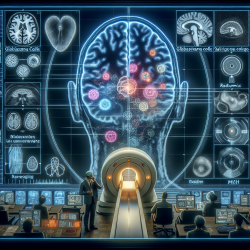Understanding the Impact of Mass Effect Deformation Heterogeneity on Glioblastoma Survival
Glioblastoma (GBM) is a highly aggressive brain tumor with a dismal prognosis. Recent research, "Mass Effect Deformation Heterogeneity (MEDH) on Gadolinium-contrast T1-weighted MRI is associated with decreased survival in patients with right cerebral hemisphere Glioblastoma: A feasibility study," sheds light on a potential new prognostic marker that could revolutionize treatment strategies.
What is MEDH?
Mass Effect Deformation Heterogeneity (MEDH) refers to the variance in tissue deformation caused by the tumor's mass effect on the brain, particularly in functionally significant areas. This study utilizes advanced MRI techniques to measure these deformations and correlates them with patient survival rates.
Key Findings
- Increased MEDH in certain brain areas is associated with decreased survival, particularly in patients with right hemisphere tumors.
- The study found significant MEDH correlations in areas related to language comprehension, cognitive functions, and motor control.
- Higher MEDH values in the left hemisphere's functionally eloquent areas were linked to poorer survival outcomes.
Implications for Practitioners
For practitioners, these findings emphasize the importance of incorporating advanced imaging techniques into the diagnostic and treatment planning processes for GBM patients. Understanding MEDH can help in:
- Predicting patient survival more accurately.
- Tailoring personalized treatment plans based on the tumor's impact on brain structures.
- Identifying patients who may benefit from more aggressive or alternative therapies.
Encouraging Further Research
While this study provides a promising new direction, further research is needed to validate these findings across larger, diverse populations. Practitioners are encouraged to contribute to ongoing research efforts and consider how MEDH can be integrated into clinical practice.
Conclusion
The integration of MEDH analysis into clinical practice could significantly enhance our understanding of GBM and improve patient outcomes. As we continue to unravel the complexities of brain tumors, data-driven approaches like this offer hope for more effective treatments.
To read the original research paper, please follow this link: Mass Effect Deformation Heterogeneity (MEDH) on Gadolinium-contrast T1-weighted MRI is associated with decreased survival in patients with right cerebral hemisphere Glioblastoma: A feasibility study.










